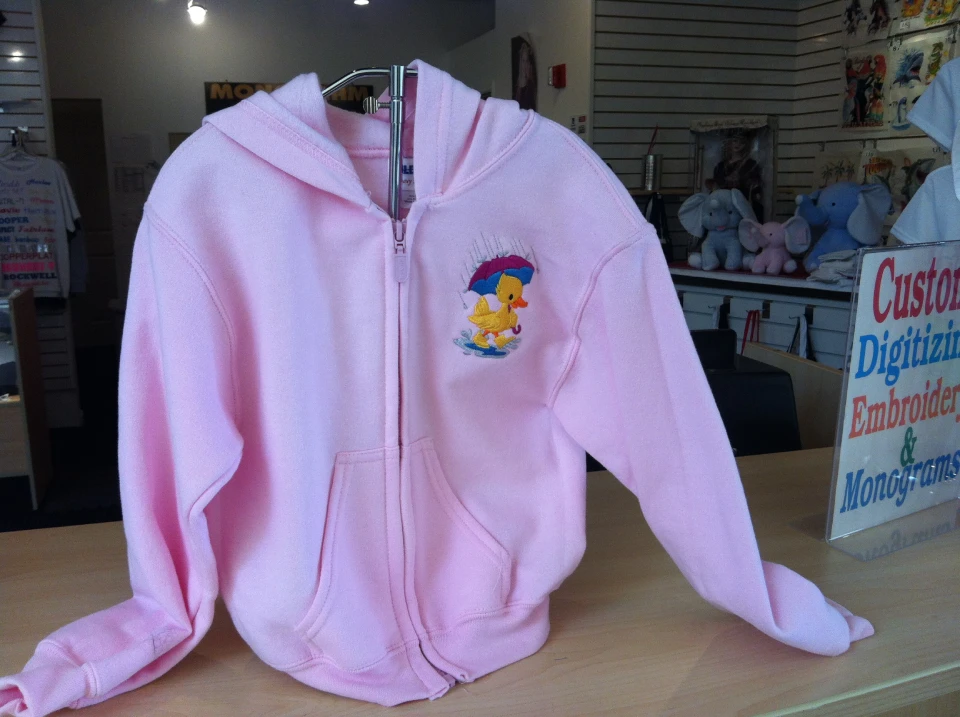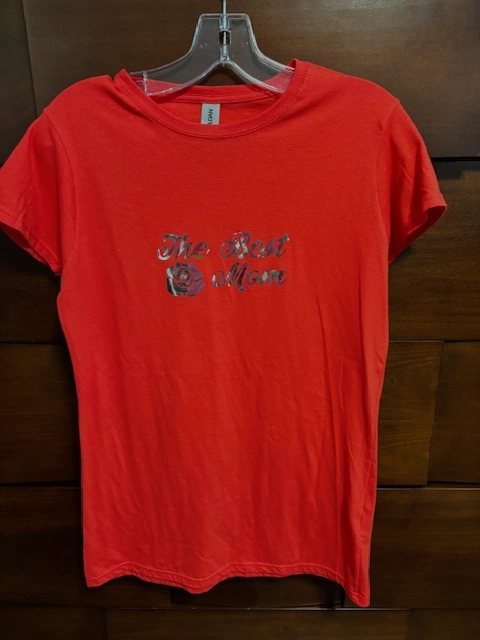Classy Monogramming on Towels for a Touch of Deluxe
Wiki Article
The Art of Custom Embroidery: Unlocking the Keys to Creating Distinct and Memorable Styles
The tricks to producing customized embroidery layouts that astound the eye and leave a lasting perception lie in a delicate equilibrium of strategy, creative thinking, and interest to information. As we delve right into the world of customized needlework, we reveal the nuanced interaction in between thread selection, sew intricacy, and style customization that raises a mere garment to a job of art.Selecting the Right Embroidery Threads
When picking embroidery strings, what key variables should you take into consideration to guarantee the very best results for your customized layouts? The option of embroidery string is critical in identifying the last end result of your embroidered design. One of the main factors to consider is the material of the thread. Various materials such as cotton, polyester, rayon, and silk use differing levels of sheen, durability, and structure. It is vital to choose a string product that enhances the textile you are embroidering on and aligns with the preferred appearance of the design.
Thicker strings can add dimension and appearance to your design, while finer strings are suitable for complex details and tiny message. In addition, thinking about the color fastness and washability of the string is vital to ensure that your customized designs keep their high quality and vibrancy over time.
Exploring Various Stitch Methods
To look into the world of 'Checking out Different Stitch Strategies', one should realize the ins and outs and nuances that each sewing method brings to the art of embroidery. Various stitch techniques not just add aesthetic interest but also add to the overall structure and measurement of the style. One prominent stitch method is the satin stitch, which entails closely stuffed parallel stitches to create a smooth and shiny surface, perfect for completing forms and developing bold details.On the various other hand, the backstitch is a functional technique commonly used for detailing and including fine details. It includes sewing in reverse to create a strong line of embroidery. In addition, the French knot stitch adds a tactile aspect to layouts, perfect for creating textured accents like blossom facilities or decorative touches.
Checking out various stitch strategies enables embroiderers to have fun with light, darkness, and depth within their designs, raising the aesthetic charm and creative top quality of their needlework tasks. By mastering different sewing approaches, one can unlock unlimited possibilities for producing one-of-a-kind and unforgettable custom-made needlework items.
Incorporating Personalized Style Components
Having actually explored the complexities of various stitch techniques such as the satin stitch, backstitch, and French knot, the focus currently moves in the direction of integrating customized style aspects in customized needlework tasks. Personalized layout components play an essential duty in making embroidery tasks absolutely one-of-a-kind and memorable. One way to include personalization is by adding click now initials, names, or considerable dates to the design. This not just includes a personalized touch however also enhances the sentimental worth of the embroidery piece.Another means to integrate individualized design components is by including icons or themes that hold special definition to the recipient or show their passions and character. Including a favorite blossom, animal, or hobby-related sign can make the needlework style more meaningful and individualized. Additionally, picking colors that resonate with the recipient or line up with the intended theme can better enhance the customization of the embroidery task.
Grasping the Art of Shade Coordination

One key aspect of color control is understanding shade theory. This includes recognizing just how various shades engage with each other, the emotions they share, and how they can be integrated to create aesthetically appealing styles. By using color theory concepts, embroiderers can develop harmonious color schemes that enhance the general appearance of the style.
Additionally, taking note of contrast is vital in shade coordination. Making use of contrasting colors can help specific components of the design pop, enhance clarity, and develop an aesthetically dynamic needlework item. By understanding the art of color coordination, embroiderers can raise their designs and produce memorable pieces that reverberate with customers and viewers alike.
Enhancing Texture With Advanced Embroidery Stitches

French knots, for example, are best for including small, increased dots to your layout, resembling the appearance of beads or creating a textured surface area. Bullion knots, on the various other hand, can be used to create twisted, ropelike elements that add a luxurious feel to the embroidery. Seed sewing entails little, scattered stitches that can complete areas with a multicolor appearance, while turkey job develops fluffy, dimensional accents evocative animal fur or foliage. Experimenting with these advanced embroidery stitches enables you to press the boundaries of conventional embroidery and produce really special and visually enticing textures in your designs.
Final Thought
In conclusion, the art of custom needlework includes a combination of selecting the appropriate strings, checking out various stitch strategies, including tailored design aspects, mastering shade sychronisation, and enhancing appearance with innovative stitches. By recognizing and carrying out these essential elements, embroiderers can develop distinct and remarkable designs that showcase their creative thinking and skill. Needlework lovers can open the tricks to creating attractive and bespoke items that stick out and leave a long lasting impact.Report this wiki page